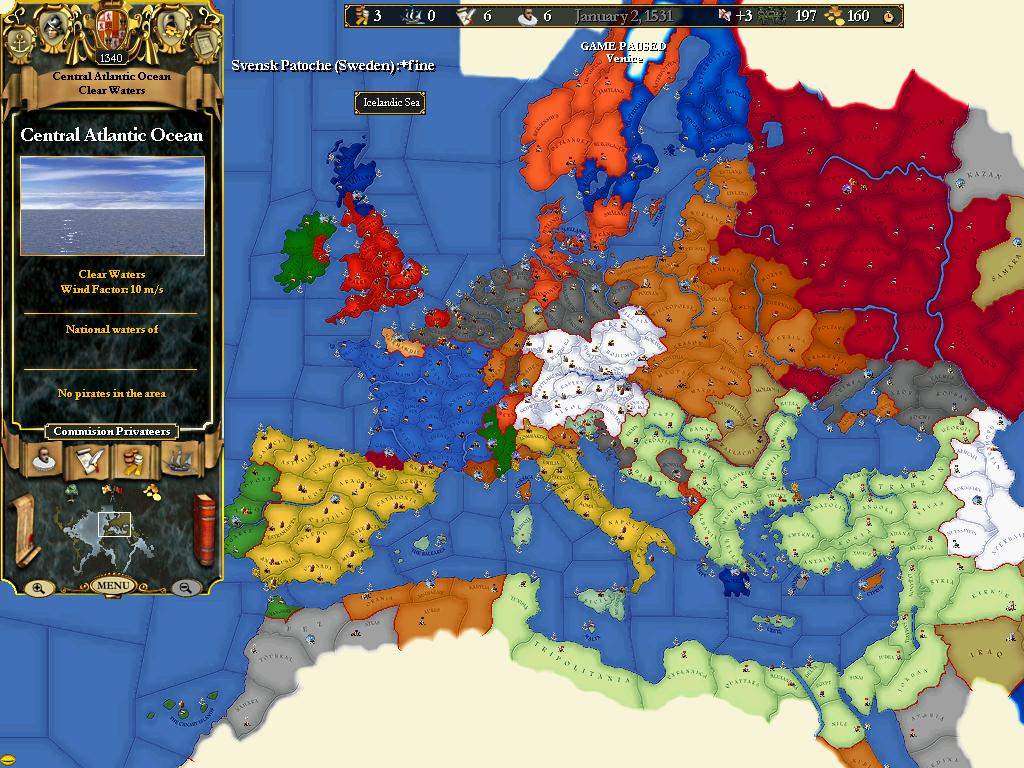DSYoungEsq said:I'm not sure you really can, Barnius. The perfect solution would be to show a graph over time for each nation, taken at, say five-year intervals, so that a "bad" year just 'blips' the graph. But any "snapshot" will inherently have difficulties. It is the progress over time that will matter; Austria's current difficulties with looted provinces and low stability won't be evident in the next between-session snapshot (at least, I fervently HOPE they wonto ), so that snapshot should produce a much more accurate picture of the Austrian economic picture.
Of course, if you want to do saves every 5 years, then extract the relevant data and build the graphs of that data as a function over time, be my guest.
And exactly that I was doing apparently while you were writing this: great minds really do think alike it seems
I thought a lot about those concepts as they are implemented in EU2 game and how to track them on the yearly bases throughout the whole campaign.
Finally there is a detailed model for determination of the total yearly income available, but to perform it for the each year??!!
Naturally, the perfect solution would be the game to collect all the needed data on the yearly bases and saves it in the “eyr” section, like “navy”, “army”, … The categories would be: all sorts of budget incomes (census, taxes, trade, tolls, gold, …), manufactory research and stability increase, monarch research and stability increase and neighbour bonuses for each technology. I suppose also gifts should be taken into account as well as loans not returned.
But is it really needed? Because in the “eyr” there is something called wealth and it can be used as an economical measure of country greatness.
It is equal to (yearly) budget minus (yearly) military maintenance expenses. It is basically profit a company called Country X collects on the yearly bases. Military maintenance expenses can be regarded as sort of insurance for the company’ existence and naturally it decreases the wealth. The alternative to strong military is good diplomacy, but in this context clearly the border between good and foolishly risky diplomacy is rather thin
There is also direct research and stability income (from manufactories, monarchs and neighbour bonus). Only monarch part is sort of predetermined for every company (country), while players decisions influence very much the rest two of them. Again, investments in military technologies mean slower growth of economy technologies and lower wealth in the future…
So, here it is, the economical measure of the greatness of our countries: cumulative inflation adjusted wealth in the picture below.

…or average cumulative inflation adjusted income (averaged value from 1453 till the present) in the picture below.

In the beginning, for 4 years, Ottoman Empire was the best nation, than Denmark took over and was leading for about a decade, and since than Flandres is the leader for over 1/3 of the century, with Ottomans and Denmark fighting for the second position. But wait, not any more, it is Spain who is the second now and will soon be the first, although it’s cumulative we are talking about here, so it is not at all easy to catch up with a country that used to lead for a long time.
Clearly, Spain is leading in yearly wealth for quite some time, and the evidence (although not with so nice lines) is inflation adjusted wealth in the picture below.

EDIT:
Gifts are included in wealth, but loans are not, so if you wish to add to your country greatness, ask gifts, not loans (that you do or do not return).
Last edited:


